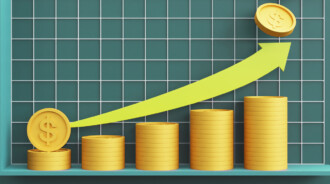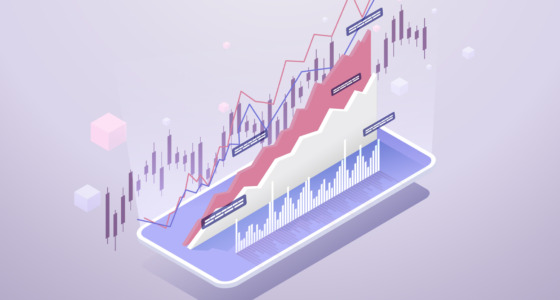

21st century investing might resemble the same processes developed over the 20th century, but today’s financial markets evolve at a rapid rate. Consider the emergence of one of the biggest new markets globally, cryptocurrency, for a good example. With hundreds of billions of dollars in value and a considerable volume of activity, it’s easy to forget—no one really knows who invented Bitcoin in the first place.
In a changing world with a globally connected economy, financial markets today are far less isolated, more volatile, and constantly engaged in innovation. What are some of the most intriguing facts about today’s markets that the average investor might like to know? Join us for a quick look at some of the most interesting changes, developments, and fast facts about today’s financial markets and institutions.
1. Bitcoin is big — and still part of a big mystery
Despite the massive buzz generated by Bitcoin over the past few years and the brand-new type of financial market it created, we still don’t know much about its origins. Satoshi Nakamoto, the name or pseudonym used by the author of the original Bitcoin white paper, has never revealed themselves to the public. Despite numerous claims over the years, no one has proven who created Bitcoin. Was Satoshi even a single person to start? We may never know, but the decentralized financial market definition he created seems set to last.
2. There’s a hard cap on the number of Bitcoins
It’s an odd concept — fiat currencies in a traditional financial market infrastructure don’t have any theoretical upper boundary to how much can exist in an economy. In the Bitcoin market, though, there is a final cap. Someday, there will be no more Bitcoins to mine. A hard limit of 21 million coins is a foundational element of the market. Once the cap is reached, trading within the Bitcoin marketplace may become even more complex and interesting. Other cryptocurrencies that have sprung up in the wake of Bitcoin, such as Ethereum, have no such lifetime limits.
3. Margin debt is on the rise
When investors trade on margin, they use capital that isn’t their own, instead relying on credit from their brokers to make acquisitions. Since the start of the 21st century, margin debt has increased substantially, accelerating even more rapidly since 2020. As a key indicator of marketplace risk, the unprecedented levels of margin debt are one of the most-watched economic signs today.

4. Sovereign wealth funds became key players
Although sovereign wealth funds, or SWFs, first started in the mid-20th century, it wasn’t until the dawn of the new millennium that they became a serious force in global financial marketplaces. Led by massive funds from countries such as Singapore, Saudi Arabia, and others, SWFs now invest heavily in globally diversified portfolios, creating a new and unique layer of economic interconnection in the financial market today.
5. Alternative trading systems take root
While most trades still occur in mainstream markets and on standardized systems, not all do. Today, the growth of institutional investments and demand for greater liquidity has led to a rise of more alternative trading systems. A different way of matching buy and sell orders with someone willing to make the transaction, technology-enabled ATS solutions give some traders more flexibility than they had in decades past.

6. More firms take note of the power and potential of retail investors
Many investors remember the sudden surge in buzz and the wild trading days that surrounded “meme stocks” such as GameStop and AMC in recent years. The highly volatile conditions around these stocks led some to realize gains while others came face to face with the challenges of managing risk. The widespread, mainstream buzz about average investors using platforms such as Robinhood to engage with the market has led many more “retail” investors to explore their own entrance into the market, changing the calculus for institutional financial market analysis.
7. Negative oil prices caused a shock
When the coronavirus pandemic first began, the shock of the lockdowns led to immense economic impacts — and it led to a historic first in the financial markets when oil demand plummeted so severely that commodity prices briefly dipped into negative values. While prices eventually stabilized, the idea that some contract owners might have to pay to fulfill their oil orders was a shocking first.
8. Algorithms play a bigger role than ever
When looking at the modern financial market, no overview would be complete without looking at AI, machine learning, and algorithmic trading. Technology has touched every aspect of the financial world now, but the creation of high-frequency trading algorithms has been one of the most significant innovations in the 21st century. Enabling institutional players to be faster than ever and to make split-second decisions based on big data, algorithmic trading looks set to be a major element of trading now and in the future.
9. International diversification is more common
While investors once were more likely to keep their money close to home and invested in slow-growing, long-yielding stocks and bonds, more diversification has occurred over the last 20 years. Even individual traders and family investors have looked overseas more often to acquire shares in international companies for a sounder strategy.
10. The tech sector leads the way in market cap
In the 20th century, the transportation sector was one of the most valuable segments of the global market — think railway stocks, automobile investments, and even air travel. For the 21st century, the leader seems clear: the technology sector has dominated and will continue to do so. With a market cap of more than $10 trillion already, it’s the clear winner.
What does the future hold for global financial markets?
Before publishing the Bitcoin white paper, no one could have accurately predicted the emergence of a brand new multi-billion-dollar financial market. Today, even some of the most prominent corporate players maintain a portion of their portfolio in crypto. This massive shift highlights just how different the 21st-century financial markets are and will continue to be in the future.
While there are new opportunities and intriguing developments to monitor, there is also the potential for increased risk to one’s investments. For those involved with trading, watching these changes closely and developing a strategy to manage your risk over time isn’t an option—it’s a necessity.









